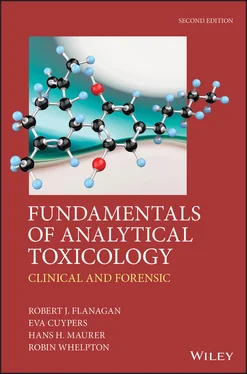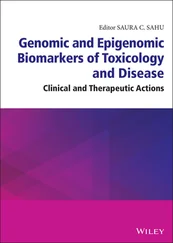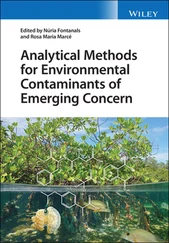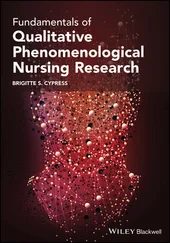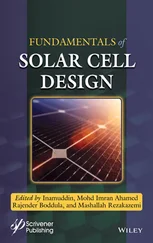1 ...6 7 8 10 11 12 ...27 The use of LC in the qualitative analysis of drugs and other poisons has been limited by the lack of a sensitive universal detector analogous to the flame ionization detector (FID) in GC and the poor performance of gradient elution systems. However, a range of sensitive MS detectors is now available for use with LC and together with modern narrow-bore packed columns and eluent gradient programming, major advances have been made. The advent of accurate mass detection systems, i.e. detectors that can measure mass-to-charge ratio ( m/z ) to four decimal places, together with other parameters that can be measured to increase the certainty of peak assignment, has been yet another milestone (Grapp et al., 2018). However, the high purchase and maintenance costs of such systems remains a major barrier to their widespread use.
Box 1.1Opiates, opioids, and opium
Opium is the dried residue obtained from the white, viscous fluid that exudes from the unripe seed head of the opium poppy (Papaver somniferum) when it has been cut
The opium poppy is the major source of the drug morphine, but also contains the closely related alkaloids codeine and thebaine. Opium also contains meconin, noscapine, papaverine, and reticuline, amongst other compounds, which are not structurally related to morphine and are not analgesic
Purified morphine and thebaine are used as starting materials for semi-synthetic drugs such as dihydrocodeine and oxycodone
Acetylating morphine produces diamorphine, which was introduced in Germany in 1895 as an antitussive under the name Heroin. The addictive properties of diamorphine quickly became apparent and the importation, production, and use of diamorphine was banned in the US in 1924, for example
The term ‘heroin’ is now generally used to refer to the impure diamorphine obtained by treating semi-purified opium with an acetylating agent, usually acetic anhydride. Acetylcodeine is a common contaminant of heroin
Strictly, the term ‘opiates’ refers to substances obtained from opium, not all of which have morphine-like properties, whereas ‘opioids’ are materials with morphine-like properties
The term ‘opioid’ can thus apply to not only naturally occurring and semi-synthetic compounds such as morphine and oxycodone, but also synthetic drugs such as methadone and dextropropoxyphene, as well as naturally occurring transmitters, for example met-enkephalin and leu-enkephalin
The term ‘narcotic’ originally referred to any psychoactive compound with sleep-inducing properties. In the US it has since become associated with opiates and opioids, commonly morphine and heroin, as well as stimulants such as cocaine, but is clearly non-specific and is best avoided
An important consideration is that the MS detector is a reaction detector, i.e. the signal obtained is dependent on chemical reaction(s) occurring in the ionization source. Therefore, the signal obtained is dependent not only on the analyte, but also on the possible presence of co-eluting compounds that may affect the ionization of the analyte. This is not normally a problem in GC-MS because the carrier-gas (usually helium) has little influence and the selectivity of the system is such that the analyte is usually fairly pure when it arrives at the ionization source. Not so with LC-MS, where either the suppression, or enhancement of the analyte signal due to the presence of co-eluting compounds can be significant.
1.2.2 Systematic toxicological analysis
The problem in systematic toxicological analysis (STA, poisons screening, drug screening, unknown screening) is to detect reliably as wide a range of compounds as possible in as little sample (plasma/serum/whole blood, urine, vitreous humour, stomach contents or vomit, or tissues) as possible at high sensitivity, but with no false positives (Maurer, 1999). Ideally some sample should be left to permit confirmation of the results using another technique and if indicated quantitation of any poison(s) present to aid clinical interpretation of the results.
In poisons screening it is important to adopt a systematic approach in order to eliminate possible contenders and to ‘home in’ on any compound(s) of interest present. STA can be divided into three key stages ( Figure 1.1). The aim of the sample preparation step is to retain all the toxicologically important substances whilst removing potentially interfering sample matrix components. Thus, a wide range of analytes of interest, including lipophilic and polar, acidic, basic, and neutral species, should be isolated. To increase the yield of analyte(s) when analyzing urine, for example, the sample may be treated with β-glucuronidase/arylsulfatase to hydrolyze conjugated metabolites, but this may not be necessary if the conjugates themselves can be detected.

Figure 1.1 The three key steps in systematic toxicological analysis
The aim of the differentiation/detection step is to identify all relevant compounds in the minimum amount of time. This requires a combination of relatively non-specific (‘universal’) assays and highly selective methods. Immunoassays, particularly if the antibody has wide cross-reactivity, are useful for identifying classes of drugs. TLC has the advantage that all the non-volatile materials in the extract remain on the plate, whereas with GC and LC there is always the possibility that compounds have not been eluted from the analytical column. Obviously, one analytical technique cannot separate and identify all the possible compounds of interest. Only a finite number of compounds can be resolved on a single TLC plate, for example.
The greater the number and range of techniques that are available, the greater the probability that unknown substance(s) will be identified correctly. Investigation of the responses of various analytes to different detectors can provide valuable information about the nature of a compound. LC with diode array detection (LC-DAD) can provide spectral information to aid peak assignment, but is limited by relatively poor sensitivity and selectivity (Section 10.3.1). In contrast, hyphenated techniques such as GC-MS can provide robust analyte identification, particularly when combined with computerized libraries of electron ionization (EI) fragmentation data that can be searched rapidly to confirm compound identity (Grapp et al ., 2016). In addition, positive ion chemical ionization (PCI) MS can be used to give an indication of the molar mass of a substance (Section 13.3.1.2).
Analytes may be chemically modified to improve their chromatographic properties or ‘detectability’, but derivatization can also give useful qualitative information. One classic example is the so called ‘acetone-shift’ (reaction of acetone with a primary amine to give the corresponding Schiff's base). Amfetamine, for example, reacts with acetone to form N -(1-methyl-2-phenylethyl)propanimine ( Figure 1.2). If the product does not chromatograph as expected, then the unknown substance was not amfetamine.

Figure 1.2 Reaction of amfetamine with acetone
The third step in STA is to compare the observed data with validated database information. Clearly, databases used in compound identification need to be regularly updated, and must include information on not only parent compounds, but also metabolites, common interferences, and possible contaminants. It is important that the analytical techniques used in establishing such databases are reproducible, both within and between laboratories.
Читать дальше
